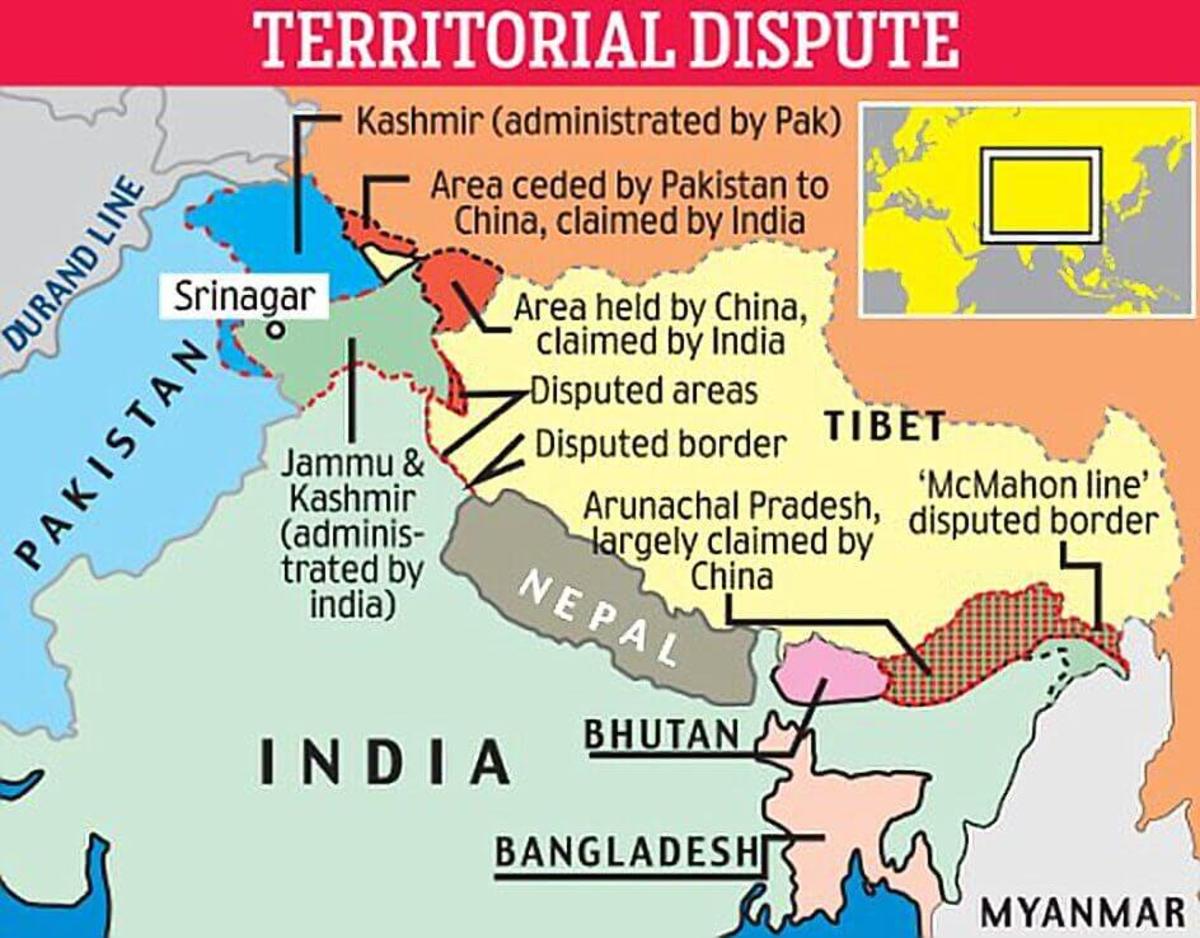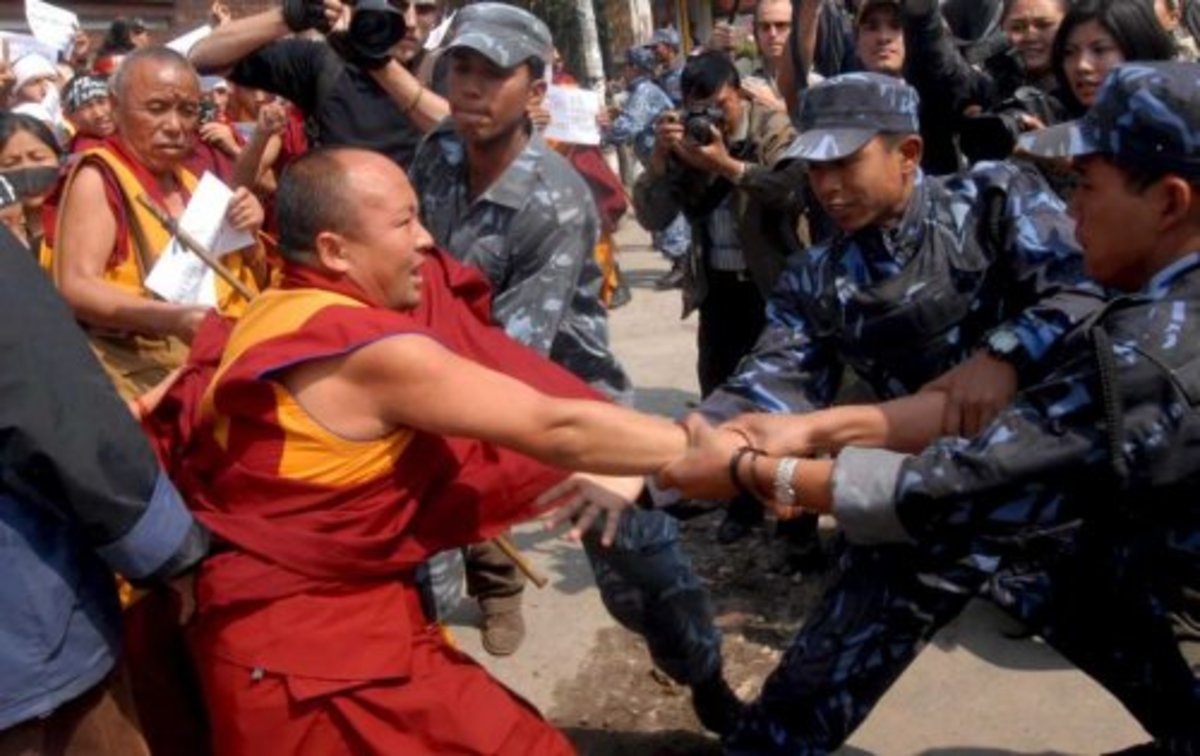The Film, Tears of Tibet
The Film, Tears of Tibet by Windhorse on YouTube
Presented by Windhorse on YouTube
Found this valuable underground film, "The Tears of Tibet" on YouTube and wanted to diseminate it through this medium. If you would like to comment, please contact:
Reliable Information About Tibet
From Tibet Information Network
Border shootings and travel restrictions
"In September 2006, the shooting by border guards of a 17-year old nun, known as Kelsang Namtso, close to the Nangpa pass on the Tibet-Nepal border has attracted international media attention. Beyond this individual incident, the plight of Tibetans illegally crossing the border to Nepal has been an issue for decades. Many Tibetans want to travel to Nepal and in particular India, where their exiled leader the Dalai Lama lives. However, given that this raises the disapproval and suspicion of the Chinese authorities, many obstacles impede Tibetans from obtaining legitimate travel documents. As with many other governance issues in Tibet, this has led to the emergence of a grey zone in which criminality, arbitrariness and corruption thrive. Consequently, Tibetans often see no choice but to cross the border without adequate documentation and, in the process, risk considerable hardship and danger. Unless the authorities bring their practices into line with the laws of the People’s Republic of China (PRC) and allow Tibetans unrestricted mobility, regardless of the purpose of their travels, the situation is not likely to improve.
According to PRC laws, Tibetans, as all Chinese citizens, are entitled to travel abroad if they wish; in practice though, discriminatory restrictions prevent them from actually doing so. These restrictions are not directly applied along ethnic lines. Tibetans who apply for travel documents from a location in the Chinese mainland, e.g. students who want to study abroad, do not face any more difficulties than other Chinese citizens. However, applying for travel documents within Tibetan regions of the PRC as a Tibetan is far more difficult. Though this indicates the political rather than racial nature of the discrimination, it also highlights the ongoing predominance of political considerations and alleged security issues over the rule of law, a situation which creates policy ambiguities and hence corruption. The situation is worst in the Tibet Autonomous Region (TAR) where government control is the tightest.
The Chinese authorities have not implemented a formal ban consistently restricting any kind of contact with the Dalai Lama or any of the exile institutions (this would anyway hardly be practicable without a general travel ban on ethnic Tibetans). However, they are still anxious to maintain strict control over such contacts and are particularly keen to refute any impression that they are incapable of policing their borders or that Tibetans strive to leave China. Consequently, those caught passing the border illegally are subjected to much harsher treatment than those known to have travelled to India legally, even though their contacts with the Dalai Lama and exiles are tacitly understood. For example, business people, even from the TAR, generally face far fewer difficulties in getting passports and travel documents, even though the Chinese authorities know that most of them use the opportunity offered by formal visits to Nepal to clandestinely travel on to India to attend religious functions or to have audiences with the Dalai Lama. In recent years, the Chinese authorities discretely experimented with a more liberal border crossing policy and passed an agreement with Nepal allowing Tibetans living close to the frontier to informally cross over for a limited period of time, mainly for business purposes. However, the experiment stopped when the Chinese authorities realised that most of them took the opportunity to travel to India, using facilities provided by the UN commissariat for refugees and the then Dalai Lama Office in Kathmandu.
Though there does not seem to be a formal policy regarding the issuing of passports, long-term observations indicate that in practice, elements such as the age, social status and location of Tibetans willing to travel determine whether they get the necessary documents. Older lay people from Tibetan regions outside the TAR have the best chance, although even they might be asked to provide a security deposit of several thousand Yuan to obtain the documents. This ensures that they or their families risk being penalised if they fail to return. Young people and clerics find it most difficult to legally obtain travel documents, particularly if they live in the TAR. In this context, the shooting of Kelsang Namtso, believed to be a young nun from Nagchu, is a case in point.
In Gansu for instance, the procedure to get a passport is comparatively easy, at least if the person has a letter of invitation from a country other than India (obviously a very strongly limiting factor). The official fees for the procedure are only 300 Yuan (€30; UK£20; US$39), but it involves dealing with a string of offices. This requires that applicants speak and write Chinese well enough to find their way through the bureaucracy, pass the interviews and fill in the necessary forms, all of which are considerable hurdles for the average Tibetan. Applying for a passport in Lhasa is currently impossible without excellent ‘connections’ within the bureaucracy and the payment of ‘gifts’ in the range of 3-4,000 Yuan (€298-398; UK£197-262; US$387-515) - conditions which only a selected few are able to fulfil. Obtaining travel documents for children is nearly impossible all over Tibet.
Tibetans who arrive in India without proper documentation can be roughly divided in two groups: half are pilgrims and the other half children sent for schooling, mostly by their parents. Generally, pilgrims intend to return to Tibet in the near future, for which they will have to make another illegal border crossing, again facing the danger of being caught. The movement of large numbers of children is a particularly tragic aspect of the border crossing issue. Religious motivations are only a partial reason for parents to send their children to ‘Dalai Lama schools’. Much more pressing are economic and administrative issues faced by the parents, which are symptomatic of contemporary Tibet. These parents are mostly impoverished migrants to Lhasa from rural regions, particularly eastern and northern Tibet (Sichuan, Gansu, Qinghai) who cannot afford to pay school fees. Being migrants they do not posses local registration cards (Chin: hukou; Tib: temtho), a legacy of the old communist system, which has largely become obsolete, since Tibetans from all over Tibetan regions can now live in Lhasa or anywhere else. However, without a local temtho, it is practically impossible to get a steady occupation. This leaves most migrants who had come to Lhasa for a better life with a menial job or running a small business, both of which offer only a poor income (Chinese from the mainland, however, can get good office jobs comparatively easily). Furthermore, although regulations for nine-year compulsory education have been passed, the government has to provide places in schools only for families who have a local temtho. Without a temtho, admission, if possible at all, is very expensive (middle schools can cost 2,500 Yuan (€249; UK£164; US$322) per semester, high schools more). There is a close reciprocal relationship between temtho and office jobs; a temtho can be purchased from a neighbourhood committee for 3,000 Yuan (€298; UK£197; US$387), provided one has a job in a government or a comparable office, but getting such a job without a temtho is very difficult. The alternative is to get a temtho 'informally', which involves costs of 20 to 30,000 Yuan (€1,989-2,983; UK£1,311-1,967; US$2,577-3,866), having 'connections', and giving 'gifts' to administrative staff. Since this is obviously beyond the means of most migrants, they generally cannot afford to send their children to school in Tibet. Hence many opt for the alternative of sending them clandestinely to India for which they will have to pay about 4,000 Yuan (€398; UK£262; US$515), and where they know their children will be looked after by exiled Tibetans.
According to sources inside Tibet, the central Chinese authorities convened a meeting in Lhasa a few weeks after the lethal shooting of Kelsang Namtso in order to express their disapproval over the incident. It is questionable, however, to what extent the central authorities would acknowledge their own policies towards Tibetans as at least the indirect cause of such incidents. A recent report by the International Campaign for Tibet (ICT) mentions a further case in which border guards shot at a group of Tibetans attempting to cross the border in 2005. But, as the Dalai Lama remarked in a short TV interview a few days after the Nangpa shooting: "This has been going on for decades". The fact that the shooting of Kelsang Namtso was documented on video makes it unique. However, reports from refugees, Nepalese border guards, foreign diplomats and local people indicate that such incidents of shooting are in fact quite common, though it is impossible to know how many of them have lethal outcomes. Border crossings take place at night in extreme conditions which also claims its own death toll. There are many well-documented reports by Tibetans arriving in Nepal and India who have witnessed the bodies of those who did not survive the cold and the duress of one of the most inhospitable environments on the planet."









